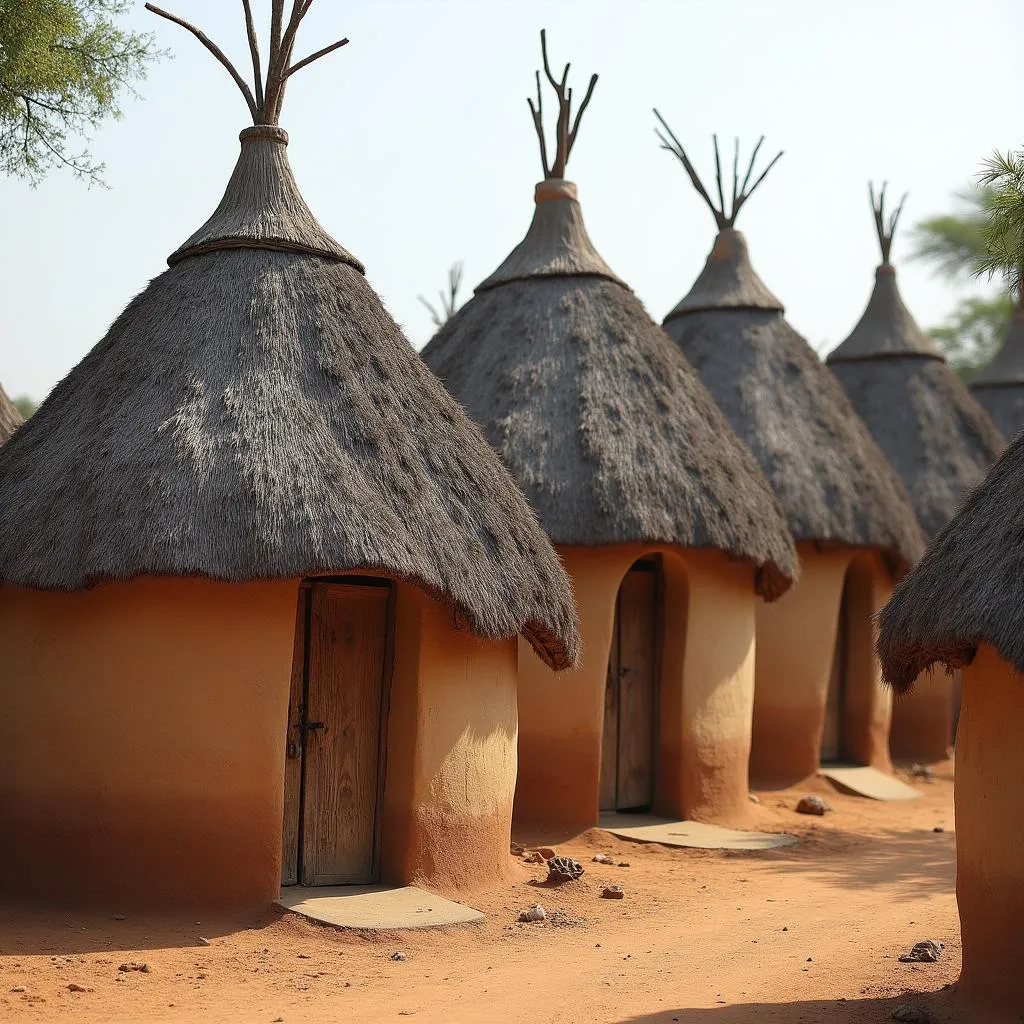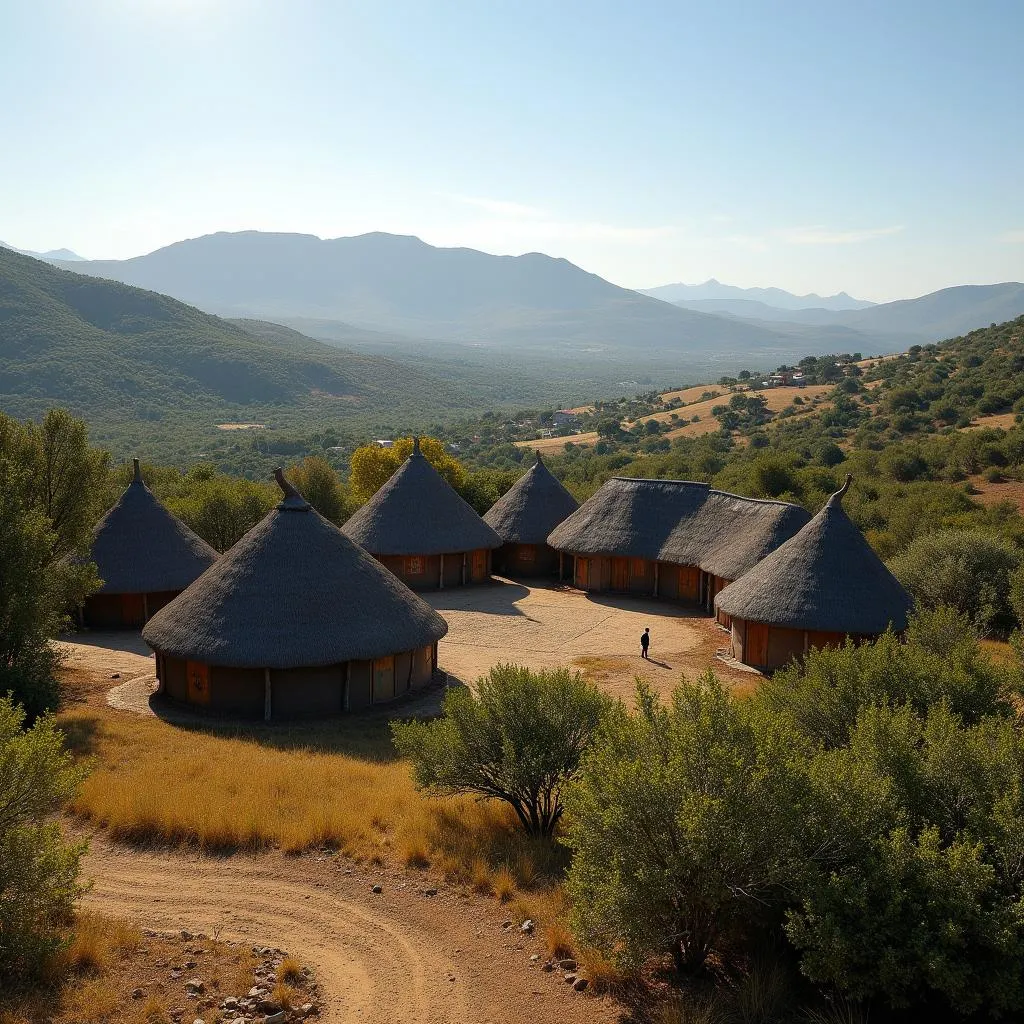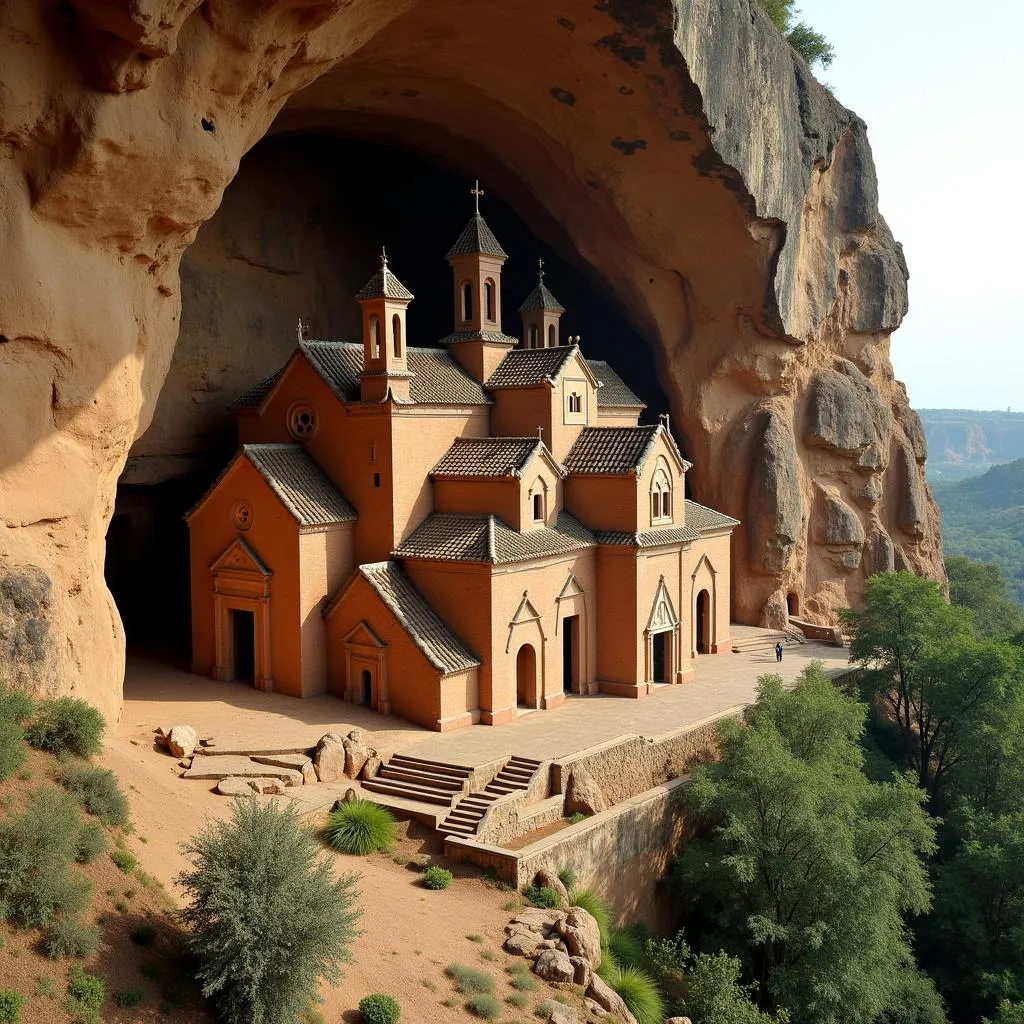African Houses with Tiers: A Glimpse into Architectural Traditions
African Houses With Tiers represent a fascinating aspect of the continent’s diverse architectural heritage. These unique structures, characterized by their layered design, offer a glimpse into the rich history, culture, and ingenuity of various African communities. From the iconic rondavels of Southern Africa to the impressive mud mosques of Mali, tiered houses showcase the adaptability of traditional building techniques to different climatic conditions and societal needs.
Uncovering the Significance of Tiers in African Architecture
The incorporation of tiers into African house designs is far from merely aesthetic; it serves practical and symbolic purposes that reflect the deep connection between architecture and the environment, lifestyle, and beliefs of the people.
Climate Control and Adaptability
One primary reason behind the prevalence of tiered houses in Africa is their exceptional ability to regulate temperature. In hot, arid regions, the layered construction creates air pockets that act as natural insulation, keeping the interior cool during scorching days. Conversely, in wetter climates, the tiered roofs facilitate efficient rainwater runoff, preventing leaks and water damage.
 Traditional tiered houses in Burkina Faso with thatched roofs
Traditional tiered houses in Burkina Faso with thatched roofs
Maximizing Space and Functionality
Tiered houses also offer an ingenious solution to maximizing living space on a smaller footprint. By adding extra levels, families can accommodate growing needs without expanding outwards. This verticality is particularly advantageous in densely populated areas or regions with limited building land.
Social Hierarchy and Cultural Expression
Beyond practical considerations, tiers often hold symbolic meanings within African societies. The number of tiers, their height, and ornamentation can signify social status, wealth, or spiritual significance. For instance, chiefs’ houses might feature more elaborate and taller tiers than those of ordinary villagers, reflecting their elevated position within the community.
Exploring Iconic Examples of African Houses with Tiers
Across the vast expanse of Africa, diverse cultures have developed their own unique interpretations of tiered architecture. Let’s delve into some notable examples:
The Majestic Rondavels of Southern Africa
Perhaps the most recognizable example of African tiered houses are the rondavels found in Southern Africa, particularly among the Zulu, Xhosa, and Ndebele people. These circular dwellings, typically constructed from local materials like stone, mud, and thatch, feature a distinctive conical roof that extends almost to the ground, creating a single, unified tier.
 A traditional Zulu rondavel village in South Africa
A traditional Zulu rondavel village in South Africa
The Grand Mud Mosques of Mali
In the West African nation of Mali, tiered architecture reaches impressive heights in the form of its iconic mud mosques. Structures like the Great Mosque of Djenné and the Sankore Madrasah in Timbuktu, constructed entirely from mudbrick, feature towering tiers that contribute to their grandeur and serve as a testament to the skill of the builders.
The Ingenious Cliff Dwellings of Ethiopia
Ethiopia’s Tigray region showcases another fascinating adaptation of tiered architecture with its remarkable rock-hewn churches. Carved into sheer cliff faces, these churches often feature multiple levels, seamlessly blending into the surrounding landscape.
 Rock-hewn church in Lalibela, Ethiopia
Rock-hewn church in Lalibela, Ethiopia
Preserving and Celebrating African Architectural Heritage
African houses with tiers, while diverse in form and function, share a common thread of ingenuity, resourcefulness, and cultural expression. They stand as a testament to the enduring legacy of traditional building practices and the deep connection between architecture and the environment. As we marvel at the beauty and ingenuity of these structures, it is crucial to support efforts aimed at preserving these architectural treasures for future generations.
